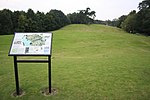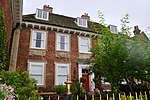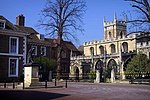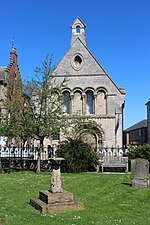Portholme

Portholme (or Port Holme on Ordnance Survey mapping) is a 106-hectare (260-acre) biological Site of Special Scientific Interest in the Parish of Brampton between Huntingdon and Godmanchester in Cambridgeshire, England. It is a Nature Conservation Review site, and a Special Area of Conservation.The site is an alluvial flood meadow, and one of the largest areas of grassland which is still traditionally managed as a Lammas meadow. Watercourses have some unusual invertebrates, including the nationally restricted dragonfly Libellula fulva. The meadow is managed by cutting followed by grazing, and it is flooded in winter and early spring. There is access by road from Mill Common, Huntingdon. and on foot via the Ouse Valley Way from Godmanchester Chinese Bridge or Bromholme Lane, Brampton. In 1910, James Radley, an early aviation pioneer based in Bedford believed that the flat areas of the Portholme Meadow, shielded from winds, and accessible to local towns, were ideal for take-off and landing as well as demonstrating to an enthused public the wonder of flight. Having acquired a Beleriot monoplane, on 19 April 1910, with almost the whole population of Huntingdon, Godmanchester, and Brampton watching, Radley took off and flew circuits of the meadow to the amazement of the local crowds. Radley's aircraft was able to complete a 16.5 mile circuit of the meadow at an altitude of 40 feet in just under 24 minutes - just over 41 miles per hour. Between April and October 1918, the meadow was used as a Training Depot Station (designated No. 211 TDS) by the Royal Air Force. Aircraft were moved to RAF Scopwick in October 1918.For clarification the feature is commonly mapped geographically, with two words: Port, and "Holme" meaning island. The SSSI was specifically named "Portholme" and includes other areas adjacent to the island. Both spellings are used in Huntingdonsire Local Plan to 2036.
Excerpt from the Wikipedia article Portholme (License: CC BY-SA 3.0, Authors, Images).Portholme
Sandy Banks, Huntingdonshire Brampton
Geographical coordinates (GPS) Address Nearby Places Show on map
Geographical coordinates (GPS)
| Latitude | Longitude |
|---|---|
| N 52.321 ° | E -0.188 ° |
Address
Sandy Banks
Sandy Banks
PE29 2LA Huntingdonshire, Brampton
England, United Kingdom
Open on Google Maps











